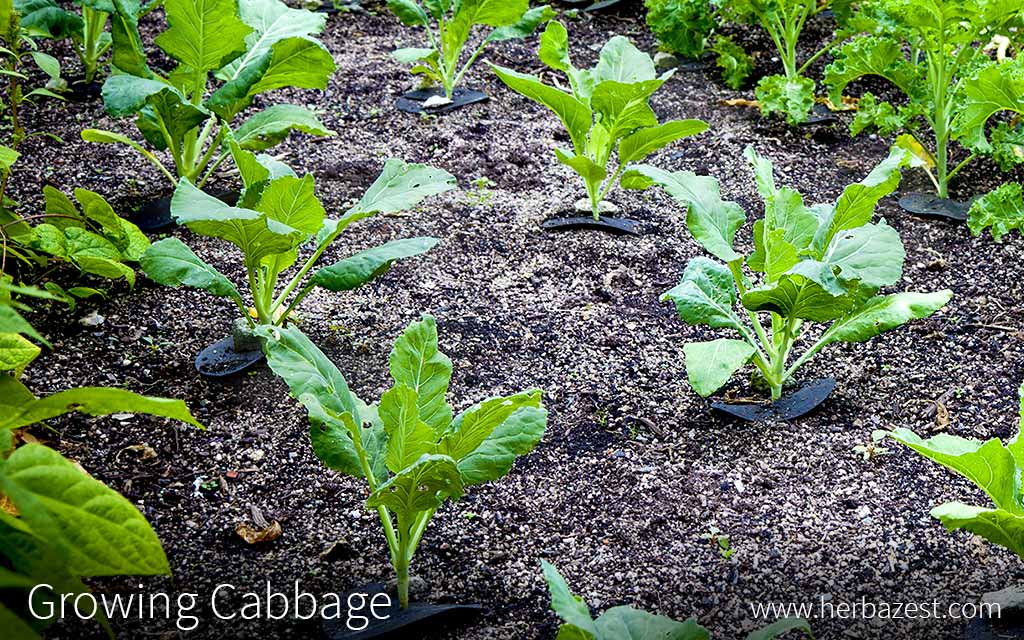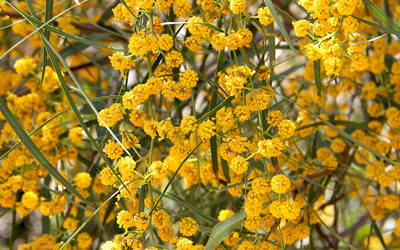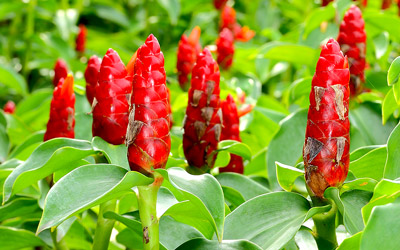There are hundreds of varieties of cabbages, and temperature, soil matter, plant population, and water needs are just some of the factors that influence their growth patterns. Learn how to grow cabbage with the help of these basic guidelines.
1. Preparing the Soil
Cabbage cultivation success depends on many factors, being the quality of the soil a key element. Cabbages do better in rich, well-drained, sandy loam soil that is high in organic matter, with a pH level of 6.0 - 7.5. They can tolerate slightly alkaline soil, but excessively sandy soils should be avoided, since they dry out too quickly and require consistent moisture.
Before planting cabbage, its is necessary to till the area, making sure the soil is loosened and there are no weeds or debris near to the garden bed. Since cabbage requires a fertile soil, it is always a good idea to incorporate two to four inches (5 - 10 cm) of organic matter and apply four to six cups of fertilizer per 100 square feet (9 m2).
2. Planting
Planting Cabbage Outdoors
Cabbage is a cool-season plant that grows best when daytime temperatures are around 60°F (15°C). They grow best in full sun and can tolerate light shade, but more shade increases maturity time. However, during the summer heat, some protection from the sunlight may be helpful.
Space the cabbages at least 12 - 24 inches (30 - 60 cm) apart, at 0.25 - 0.75 inches (1.3 - 2.0 cm) deep, in rows separated by 18 - 34 inches (46 - 86 cm). Allow proper spacing between each plant, as the basal leaves will spread up to three feet (90 cm) in all directions. For smaller, early varieties, it is appropriate to reduce the spacing.
Planting Cabbage Indoors
Cabbages are propagated by seeds that are normally grown indoors in late May before being transplanted in June or early July. Plant the seeds indoors at least six to eight weeks before the last spring frost occurs outside. When the plants are four to six weeks old, they can safely be moved outside to a cabbage patch or field, weather permitting.
The ideal temperature range for indoor seeds germination is 45 - 85°F (7 - 29°C), but they can germinate at temperatures as low as 40°F (4°C). It takes four to seven days for the seeds to emerge.
Indoor seeds should be planted 0.5 - 0.75 inches (1.25 - 1.90 cm) deep and three inches (1 cm) apart. The soil must be kept warm, around 75°F (24°C), until germination. Then, the plants can be kept around 60°F (16°C).
It is also possible to directly seed cabbages outside during the summer, weather permitting. Cabbages that are planted in the fall are usually intended for winter storage or making sauerkraut.
3. Plant Care
Watering
Cabbages are heavy feeders that require ample, consistent soil moisture. For cabbages that are planted for fall harvest, sufficiently watering the heads is important so that they can endure the intense sunlight and summer heat.
As large moisture fluctuations will negatively affect growth, and care should be taken in order to maintain a consistent level of humidity. Mulch can assist with this.
It is advised to feel the soil around the plants. If a small amount of soil removed from the root zone forms clumps when squeezed in the palm of the hand, the moisture level is adequate. When it comes to watering cabbages, frequent applications of little amounts may be better than fewer applications of larger quantities.
Fertilizing
After transplanting cabbages to outside, it is recommendable to use a starter fertilizer. When the plants are half grown, nitrogen fertilizer can be used along the side of the row or in a circle around individual plants. This will provide the cabbages with extra nutrients.
Pruning
When cabbages begin to grow, the smaller plants should be thinned out to make room for the larger ones. It is also advised to remove any damaged or diseased leaves, stumps, or growth. If left alone, these will serve as breeding grounds for further diseases and pests.
Weed Control
If cabbage patches are mulched correctly, weeds should not be an issue. Mulch will protect the shallow root systems as well as conserve moisture. Care should be taken when pulling weeds by hand in order not to damage the cabbages. For the same reason, deep cultivation must be avoided.
4. Pest & Disease Control
A variety of insects and diseases can damage cabbages. Learning how to recognize the most common threats to this crop, as well as the damage they cause, will ensure a healthy growing process.
Pests
Cabbage aphids and cabbageworms are a threat to cabbages' leaves and heads.
While cabbage aphids can usually be sprayed off with a hard stream of water, cabbageworms must be handpicked and destroyed. Putting on row covers at the beginning of the planting season can help prevent the worms from creating early damage.
Other cabbage garden pests include cabbage root maggots, flea beetles, cutworms, cabbage loopers, slugs, and nematodes.
Diseases
The formation and spread of fusarium wilt, or “the yellows,” is perhaps the most common type of cabbage disease. This fungus happens when the plant is grown in the warm season and causes the leaves to turn yellow, wilt, and die. Fusarium wilt is rarely a problem for winter-grown cabbage.
To prevent fusarium wilt, it is advised to grow resistant cabbage varieties.
Other cabbage diseases include clubroot, purple blotch, black leg, and black rot.
Wildlife
Besides pests and diseases, animals - such as rabbits - pose a threat to any cabbage patch. Building a chicken wire fence around the patch can be a long-term and effective way to ward off damage done by them and other critters.
5. Harvest
From field setting to harvest, cabbages usually fully develop in about 75 - 105 days; however, they can be harvested any time after the heads form, but before they crack or split open.
When ready, cabbage heads should be solid and firm when squeezed. At this point, heavy rainfall can cause the heads to crack open, permanently damaging them. If this happens, save the split heads immediately. The protecting leaves of the cabbage head are generally not eaten and can be used as fodder.
When harvesting cabbages, cut the heads as close to the ground as possible. Sometimes Brussel sprout-like heads grow from the angle between the leaf base and the stem above it. They can reach two to four inches (5 - 10 cm) in diameter and are better harvested when firm.
6. Storage
Heads that are free of insects, decay, and splits can be stored in the refrigerator for up to two weeks. They should not be washed beforehand, as this will increase moisture and the risk of them developing mold. The cabbages should be loosely covered with a plastic or perforated bag.
It is also possible to ferment cabbages into sauerkraut or kimchee, or make them into coleslaw.
Cabbage is a quality crop and a versatile vegetable that requires just a little bit of care and patience to grow. Once harvested, it can be enjoyed immediately or be easily preserved for future consumption.





